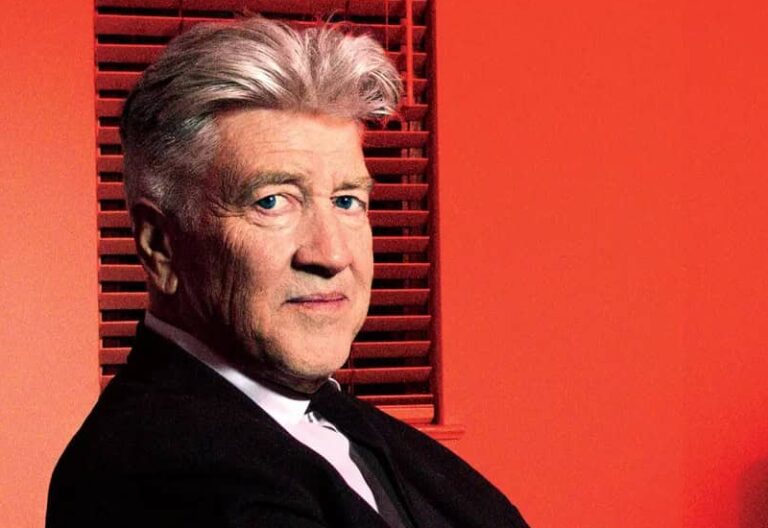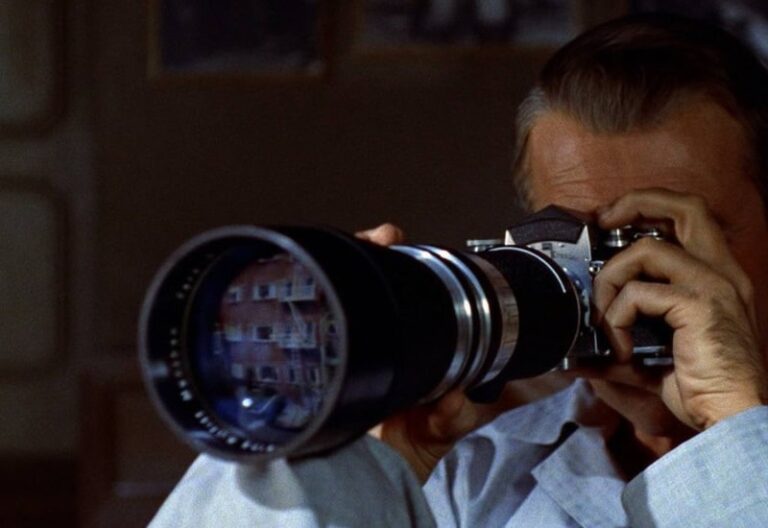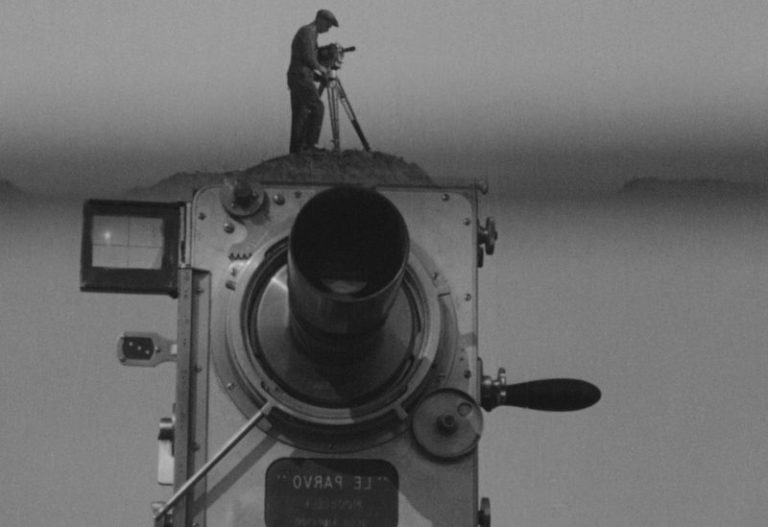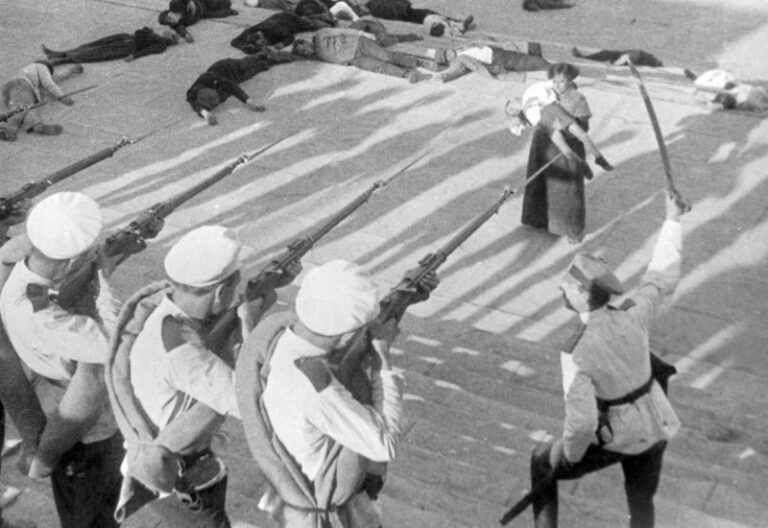beginner's guide to film theory
Film theory is the academic discipline that explores the nature, essence, and impact of cinema, questioning their narrative structures, cultural contexts, and psychological effects. It draws on a variety of intellectual traditions and methodologies to analyze the medium from multiple perspectives.
Published by: CinemaWaves Team | Filed Under: Film Blog
Early Film Theory (1890s-1920s)
Pre-Classical Period: The earliest film theorists emerged in the silent film era, with pioneers like Vachel Lindsay and Hugo Munsterberg. Munsterberg, a psychologist, explored how films influence the human mind, focusing on perception, memory, and emotion in his book “The Photoplay: A Psychological Study” (1916). Lindsay, on the other hand, viewed cinema as a new form of art and cultural expression, capable of transcending language barriers to convey universal ideas.
Soviet Montage Theory: In the 1920s, Soviet filmmakers and theorists like Sergei Eisenstein, Lev Kuleshov, and Dziga Vertov developed the concept of montage, emphasizing the power of editing to create meaning and elicit emotional responses. Eisenstein, in particular, advocated for “intellectual montage,” where the collision of images generates abstract ideas beyond the literal content of the shots.

Classical Film Theory (1930s-1950s)
Realism vs. Formalism: This period saw a debate between two major schools of thought: realism and formalism. Andre Bazin, a proponent of realism, argued that film’s unique ability to capture reality should be its primary focus. He advocated for long takes, deep focus, and minimal editing. On the other hand, formalists like Rudolf Arnheim and Sergei Eisenstein emphasized the artistic and transformative potential of cinema through techniques like editing, framing, and mise-en-scene.
Auteur Theory: In the 1950s, French critics associated with the Cahiers du Cinema, such as Francois Truffaut and Andre Bazin, developed the concept of the “auteur.” They argued that a director’s personal vision and style are evident in their films, making them the true “authors” of their work. This theory laid the groundwork for later studies of individual directors and their unique cinematic languages.
Structuralism and Semiotics (1960s-1970s)
Structuralism: Influenced by linguistic theories, structuralism in film theory examined the underlying structures that govern film narratives and meanings. Christian Metz applied Ferdinand de Saussure’s linguistic theories to cinema, analyzing the codes and conventions that structure film language. One of the notable examples of this theory is Raymond Bellour’s textual analysis of a scene from Alfred Hitchcock’s 1963 film, “The Birds”. The visual structure of the film, particularly in scenes with minimal dialogue, showcases how visual elements work together to convey meaning.
Semiotics: Rooted in the work of Saussure and Charles Sanders Peirce, Semiotic theory is focused on the study of signs and symbols in films. Metz and other semioticians explored how films communicate through visual and auditory signs, developing a systematic approach to film analysis.
Apparatus Theory: Part of the semiotics, it examines how the technical aspects of cinema – such as cameras, projectors, and the viewing environment – shape the viewer’s perception and reinforce ideological messages. Pioneered by theorists like Jean-Louis Baudry and Christian Metz, this theory suggests that the cinematic experience positions the spectator in a way that promotes passive consumption of the film’s embedded ideologies. This perspective integrates insights from structuralism, semiotics, and psychoanalysis to explore the relationship between cinema’s machinery and its impact on spectatorship.

Psychoanalytic and Feminist Film Theory (1970s-1980s)
Psychoanalytic Theory: Drawing on the theories of Sigmund Freud and Jacques Lacan, psychoanalytic film theory explored the unconscious desires and anxieties expressed in films. Laura Mulvey’s seminal essay “Visual Pleasure and Narrative Cinema” (1975) introduced the concept of the “male gaze,” examining how classical Hollywood cinema positions viewers as male subjects and objectifies female characters.
Feminist Film Theory: Building on Mulvey’s work, feminist film theorists like bell hooks and Mary Ann Doane critiqued the representation of women in films and explored how cinema reinforces or challenges patriarchal norms. They analyzed gender roles, power dynamics, and the impact of cinema on societal perceptions of gender.
Post-Structuralism and Postmodernism (1980s-1990s)
Post-Structuralism: It challenged the fixed meanings and stable structures proposed by structuralism. Influenced by theorists like Roland Barthes and Michel Foucault, post-structuralists emphasized the fluidity of meaning and the role of the viewer in interpreting films. This approach highlighted the multiplicity of interpretations and the instability of cinematic texts.
Postmodernism: Postmodern film theory reflected the fragmented, self-referential, and eclectic nature of contemporary culture. Postmodern films often play with pastiche, irony, and intertextuality, blurring the boundaries between high and low culture. Directors like Quentin Tarantino and David Lynch are often associated with postmodern cinema.
Contemporary Film Theory
(2000s-Present)
Cognitive Film Theory: This approach examines how viewers perceive and process cinematic information, drawing on psychology and neuroscience. Cognitive film theorists study how films engage emotions, create suspense, and evoke empathy, offering insights into the psychological mechanisms underlying film viewing.
Cultural Studies and Postcolonial Theory: Contemporary film theory increasingly incorporates insights from cultural studies and postcolonial theory. These approaches analyze films within their broader cultural contexts, considering how they reflect and shape cultural norms, identities, and power dynamics. Postcolonial theorists critique the representation of colonial histories and marginalized communities in cinema.
Digital and New Media Theory: The rise of digital technology and new media has prompted new theoretical approaches to film. Scholars explore the impact of digital technologies on filmmaking, distribution, and reception, as well as the convergence of cinema with other media forms like video games and virtual reality.
The development of film theory has been marked by a rich and evolving dialogue among various schools of thought, each contributing unique perspectives and methodologies to the study of cinema. From early debates on realism and formalism to contemporary analyses of digital media, film theory continues to deepen our understanding of cinema as an art form, as well as cultural artifact and social practice.
Refer to the main page for more educational insights on filmmaking and cinema history.
Postmodernist film emerged in the latter half of the 20th century, rooted in the broader cultural and philosophical movement of postmodernism. It started as a reaction…
Auteur theory is a critical framework in film studies that views the director as the primary creative force behind a film, often likened to an “author” of a book. This theory suggests…
Apparatus theory theory was a dominant film theory during the 1970s, rooted in Marxist, psychoanalytic, and structuralist thought. It examines how the cinematic experience…
In the early 20th century, a cinematic revolution was brewing in the Soviet Union. A group of visionary filmmakers, collectively known as the Soviet Montage School, gathered…
Or La Nouvelle Vague, is one of the most iconic and influential film movements in the history of cinema. Emerging in the late 1950s and flourishing throughout the 1960s…
Juxtaposition is a powerful storytelling technique where two or more contrasting elements are placed side by side to highlight their differences or to create a new, often more…






